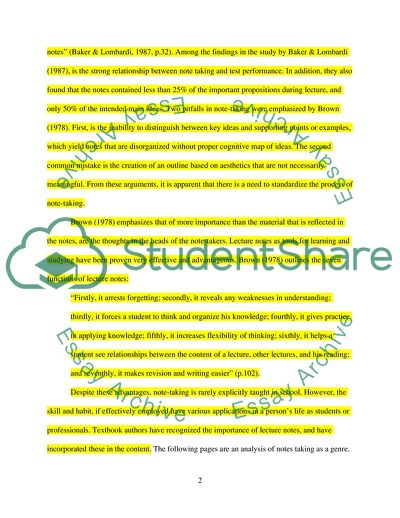Cite this document
(Genre of Lecture Notes Coursework Example | Topics and Well Written Essays - 2250 words, n.d.)
Genre of Lecture Notes Coursework Example | Topics and Well Written Essays - 2250 words. https://studentshare.org/humanitarian/1739598-master-degreeapplied-linguisticsdiscourse-analysis-for-language-teachersgenre-of-lecture-notes
Genre of Lecture Notes Coursework Example | Topics and Well Written Essays - 2250 words. https://studentshare.org/humanitarian/1739598-master-degreeapplied-linguisticsdiscourse-analysis-for-language-teachersgenre-of-lecture-notes
(Genre of Lecture Notes Coursework Example | Topics and Well Written Essays - 2250 Words)
Genre of Lecture Notes Coursework Example | Topics and Well Written Essays - 2250 Words. https://studentshare.org/humanitarian/1739598-master-degreeapplied-linguisticsdiscourse-analysis-for-language-teachersgenre-of-lecture-notes.
Genre of Lecture Notes Coursework Example | Topics and Well Written Essays - 2250 Words. https://studentshare.org/humanitarian/1739598-master-degreeapplied-linguisticsdiscourse-analysis-for-language-teachersgenre-of-lecture-notes.
“Genre of Lecture Notes Coursework Example | Topics and Well Written Essays - 2250 Words”. https://studentshare.org/humanitarian/1739598-master-degreeapplied-linguisticsdiscourse-analysis-for-language-teachersgenre-of-lecture-notes.


